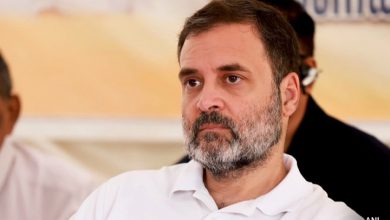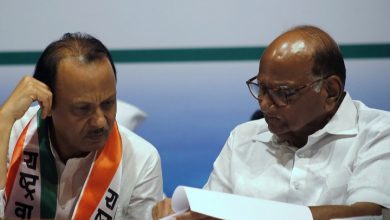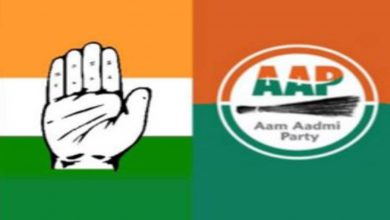Narendra Modi speech: PM’s data is impressive but it’s selective and fails to answer tough questions

It was a speech impressive enough to connect with both the urban middle class and the poor in India’s villages. It wasn’t typical of Prime Minister Narerndra Modi. There was number crunching and some serious data analysis. He has certainly done his homework before launching his massive defence of economy and counter-attack on its critics.
Modi began the speech saying he is not an economist. But, what followed indeed sounded like coming from one — nothing short of an economists’ presentation packed with selective data that essentially meant to prove that a faltering economy under his rule today is still better than UPA days and ‘achhhe din’ is still a possibility ahead.
Modi called his critics (both within BJP camp and outside) of economy as ‘pessimists who spreads despair’ and likened them to Shalya, the character in Mahabharata who demoralised Karna despite being his charioteer on Kaurva side. Remember, Modi’s big attack on critics comes shortly after senior BJP leaders and former union ministers, Yashwant Sinha, Arun Shourie and Subramanian Swamy flayed the government’s mismanagement of economy, particularly policies such as demonetisation and flawed rollout of goods and services tax (GST) as contributing factors for the current economic mess.
On Wednesday, the Reserve Bank of India (RBI) too acknowledged the state of economy lowering the gross value added (GVA) forecast to 6.7 percent from 7.3 percent earlier and warned the government that it needs to act urgently on certain areas to bring back the economic momentum.
Modi and his team are not too fond of their critics. After Yashwant Sinha’s criticism, union finance minister Arun Jaitley had retorted calling him ‘a job applicant at 80’ that followed a personal attack and triggered wider debate. In his speech, Modi, however, acknowledged that there is indeed a slowdown in the economy and his government is aware of it. Necessary steps will be taken to bring the economy back on track, Modi seemed to promise. This is a good sign since this is the first time any top minister in this government is acknowledging that there is a problem in the economy. While the PM coming out of denial mode on the state of the economy is a good signal, there are a few questions that he needs to answer on some of the claims he made. Fact checks are in order.
For one, Modi didn’t speak of a painful dip in private investments in the country during his term. One of the questions he needs to answer is that even after three-and-half years of his rule, why hasn’t his government succeeded in generating enough momentum to get the private sector put money on the table? Private investments are the lowest in several years, and the onus has been on the government to save growth.
On Wednesday, in an interview to CNBC-TV18, Mahesh Vyas, MD & CEO of the Centre for Monitoring Indian Economy, said new project announcements have declined sharply with the private sector investment proposals at their 15-quarter low. “The results for the September 2017 quarter have been very depressing. We have seen only around Rs 845 billion worth of new investments being proposed and we used to get at least Rs 1.5 trillion worth of new investment proposals and in better times, we used to see more than Rs 2 trillion worth of new investments,”
Second, Modi didn’t speak on the serious problem of not enough jobs being created for millions of new job entrants. According to the government’s own data, presented in Parliament, overall unemployment was rising in India, with the rate highest among the other backward classes (OBCs). While the overall unemployment rate marginally increased to 5 percent now from 4.9 percent in 2013, for the scheduled castes, the unemployment rate was 3.1 percent in 2011, which has now risen to 5 percent
Many experts, including former RBI governor Raghuram Rajan, have cautioned the government that the inability to accommodate new workers could emerge as the most serious concern for the economy going ahead. Despite its various schemes, this government has clearly failed to generate enough jobs for millions of new aspirants. Why was Modi, who promised acche din to the country, silent on this issue in his speech?
Third, Modi also talked about an improvement in fiscal deficit and made a comparison of a period of high-growth-high-inflation during UPA days vs low-growth-low-inflation in his term to establish that macro-economic indicators are more sustainable now. He is right, fiscal deficit has indeed come down. That’s, however, is hardly an achievement of the government’s smart policies but is mainly because crude oil prices have more than halved from the peaks and this has benefitted to bring down the import bill. As for high inflation, a period of high growth was bound to have price pressures accompanying as former RBI governors have elaborated. The credit for low inflation goes to the Reserve Bank for consistently staying on a retail-inflation targeted policy stance by keeping rates on hold for a prolonged period. But, even now food inflation continues to be high hurting the common man.
Fourth, Modi also took on critics or blaming the government for just one quarter of low GDP growth (5.7 percent in June) and made a comparison of the UPA years when GDP has fallen below that level. That isn’t entirely correct. Growth has been falling for at least five quarters now and the problem in the economy is more structural than due to one-off factors. Both demonetisation and GST have only added to the pain. But one shouldn’t miss that these elements didn’t actually trigger the current phase of slowdown. Moreover, most of the growth has come from government spending in the January-March and April-June quarters. If one deducts this component, the growth is even lower. Also, it isn’t fair to compare GDP numbers of these two periods as the methodology has changed causing a spike in the growth figures.
Fifth, Modi was largely silent on the banking sector mess. Though he can blame the UPA government for not acting to prevent the build-up of NPAs, there are no excuses for acting too late to address the problem of bad loans and bank recapitalisation. NPA scenario has only escalated in the last three years posing a big question mark to the government which controls 70 percent of the assets in the banking industry through state-run banks. Re-capitalisation of these banks continues to be a challenge and the government has not yet come with a convincing plan to address this issue. As a result of huge NPA pile, bank lending to industries have come to a grinding halt. Though government schemes such as Mudra has helped to assist micro and small enterprises, the broader flow of credit to industries has actually contracted and is at multi-year lows.
Sixth, Modi claimed demonetisation has succeeded in its goals. But neither the PM Modi nor his government machinery has managed to come with convincing evidence to show that the three originally stated goals of demonetisation — curbing black money generation, fake currency circulation and terror financing — has been achieved yet. With almost entire demonetised currency coming back to the banking system, there is a possibility that much of the black money in cash too have found its way. It is a mammoth task for the taxman to dig out the bad money from the good as the government risks the possibility of harassment of the honest taxpayer. On the negative side, demonetisation has hit the informal sector hard and the small entrepreneurs who are the backbone of India’s informal economy. Costs have, so far, outweighed the gains by a significant margin regardless of the talk of future gains such as cashless economy and increase in tax base. Modi would have done well acknowledging this.
Seventh, Modi spoke about India emerging out of the ‘fragile five’ group with a much stronger economy. He is right. But, is India staying that way? Exports aren’t doing good enough and non-oil imports are increasing to meet the domestic needs. The trends are disturbing. Even the world economy is improving, India continues to lag behind in the recovery process, wrote Ruchir Sharma, chief global strategist at Morgan Stanley Investment Management in his Times of Indiacolumn. “It is disappointing that India is missing out on the global revival in economic growth, but perhaps even more troubling that it is missing out on jobs growth – a trend that precedes the GDP slowdown but has also gotten worse over the past year,” Sharma writes in his column.
Painting economic critics as frustrated job aspirants and pessimists (in the club of Shalya) is fine, but Modi would do well looking at the merits of the criticism and learn where it is going wrong in the larger interest of the economy before discarding the criticism. Some time back, Raghuram Rajan faced a barrage of criticism for saying India is like a one-eyed man in the land of blind but fresh signals show that India may even miss out the global growth march if it doesn’t acknowledge serious problems in the economy and take a corrective course. Critics may have personal and political intentions, but the problems on the ground are real. Modi and his team should take note.







